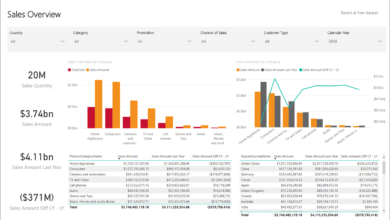The Evolution of Data Analytics

Have you ever heard about any organization thriving without data processes and insights? The obvious answer will be ‘no”. Data analytics is the key to any organization’s or business’s success because it helps companies optimize their performance. It has become an essential step for organizations to achieve their goals quickly. It encourages leadership to develop an evidence-based strategy to better understand the target marketing initiatives. It assists companies in decision-making and creates strategies informed by data analysis. Many leading sectors, such as healthcare, banking and finance, education, sports industry, power and fuel, entertainment and media, transport industry, and film industry, implement data analytic for better business results.
Data analytic helps reduce costs by providing more efficient business processes by storing large amounts of data. Companies implementing data analytic within their businesses can gain competitive advantages and be able to make faster decisions, lower costs, enhance revenue, and spur innovation. Therefore, almost every organization hires certified and experienced data analytic professionals who can provide meaningful data insights. Many universities are introducing and providing advanced data analytics bootcamp that help candidates learn about the evolution of data analytic so they can implement their knowledge in their work field.
In this article, we will discuss the evolution of data analytic and see how it is improving daily.
What is data analytic?
Data analytic is a set of algorithms, technologies, and processes that provide meaningful insights to business leaders to make the right decisions. It is also called an advanced science of analyzing raw data sets to make meaningful conclusions about information. Data analytic has many technologies that can be automated into algorithms and mechanical processes that transform raw data into valuable information for human consumption. Organizations implement data analytic, which gives a reliable understanding of future requirements.
Data analytic help businesses perform more efficiently to maximize market share and profit. It helps in making strategically guided decisions. Data analytic can be categorized as descriptive analytics (what happened), diagnostic analytics (why something happened), predictive analytics (what will happen), and predictive analytics (what should be the next step).
It is all about extracting and analyzing raw data so organizations can understand and evaluate relationships, trends, and patterns to get insights and draw conclusions based on the data to make more informed business decisions.
Let us look at the evolution of data analytics in the following section.
The Evolution of Data Analytics
A few years ago, did you ever think of Siri, Alexa, Google Maps, or similar applications? We are using all these highly advanced technologies because of the evolution of data analytic. Weather forecasts, space forecasting, health-related medical predictions, advancements in the cyber world, digital marketing strategies, and many more examples show the extraordinary evolution of data analytic technologies.
The evolution of advanced data analytic has been a growing and remarkable journey. It has started with spreadsheets and has reached the high-tech era of AI (artificial intelligence)-powered data insights. Over the past decade, everyone has witnessed a significant transformation in data analytics, which has emerged as a game changer in fostering innovation and informed decision-making. Data analytics has become a strategic asset for organizations, businesses, and industries.
Step by step, how data analytics is getting better versions can be shown in the following stages.
-
First Wave of Data Analytics
A decade before the millennium saw remarkable growth and evolution in computers, storage, computational power, and enterprise transaction and application processing systems. The first wave of data analytics has transformed from offline data collection and analysis to relational database management, data warehousing, and resultant business intelligence.
In this wave, the popularity of the internet was among the principal factors just before the second wave of data analytics. It was time for the rise of NoSQL, or non-relational databases, along with OLAP (online analytical processing) and many other technologies.
Big Data
In the last decade, the business world has seen exponential growth in data volume, variety, and velocity, known as an era of big data. Internet-connected devices, sensor technologies, and social media have generated enormous amounts of data, known as the Big Data Boom. It provides deep insights into product development, customers, supply chain behavior, and competition, resulting in increased productivity, innovation, and revenue.
-
Next Wave of Data Analytics
This wave of data analytics includes the rise of cloud computing. The cloud has made an enormous contribution to digital optimization and transformation. The beginning of cloud technologies includes SAAS, PaaS, and IaaS services. This wave has witnessed the implosion of mobility, e-commerce, 3G and 4G networks, virtual assistants, chatbots, and social media-accelerated digital transformation.
Organizations were implementing OLTP (online transaction processing) with OLAP (online analytical processing) to manage vast transactions and represent analytics and insights besides data lakes and layers.
-
The era of Data Science and Machine Learning
Since big data technologies are complicated and there is a need for more skilled professionals capable of providing meaningful insights, the new branch of data analytics is data science. Its work is limited to predicting trends and proactively providing offerings for clients based on their past patterns, likings, and other variants. It enhances customer satisfaction and stickiness.
Data analytics gets more innovative with advanced versions of machine learning and artificial intelligence. Many leading industries are investing in big data and analytics to stand out.
Future of Analytics
The process of evolution encompasses more than just growth; it extends to the future of analytics, holding the potential for a harmonious society led by machines and overseen by technologists and managers committed to promoting peace. Ultimately, they must combine intelligent machines and smart humans to achieve better results.
So, data analytics technologies have changed and transformed and have reached almost the top level of advancement. But there are many more to come, including several new technologies humans have yet to consider.
If you are planning to enter the field of data analytic, now is the right time to join the bandwagon. Take up a reliable data analytics certification program and gain the right skills for the job.



